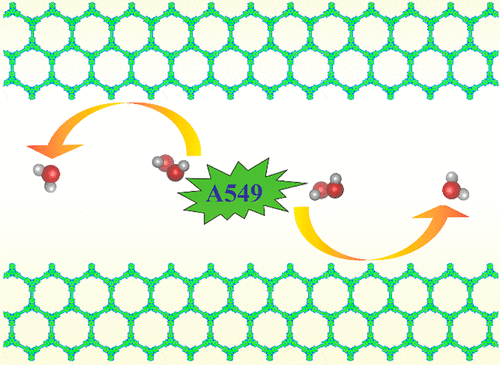当前位置:
X-MOL 学术
›
ACS Appl. Polym. Mater.
›
论文详情
Our official English website, www.x-mol.net, welcomes your feedback! (Note: you will need to create a separate account there.)
Poly(1,3,5-tris(4-ethynylphenyl)-benzene) Conjugated Polymers as Electrochemical Sensors for Hydrogen Peroxide Detection
ACS Applied Polymer Materials ( IF 5 ) Pub Date : 2020-01-17 , DOI: 10.1021/acsapm.9b01013 Caiyu Qi 1 , Zigui Kan 1 , Deqi Zhang 1 , Junyan Tang 1 , Zeng Ren 2 , Xiuzhi Jia 2, 3 , Caolong Li 1, 2 , Fei Wang 1
ACS Applied Polymer Materials ( IF 5 ) Pub Date : 2020-01-17 , DOI: 10.1021/acsapm.9b01013 Caiyu Qi 1 , Zigui Kan 1 , Deqi Zhang 1 , Junyan Tang 1 , Zeng Ren 2 , Xiuzhi Jia 2, 3 , Caolong Li 1, 2 , Fei Wang 1
Affiliation

|
Conjugated polymers (CPs) are becoming increasingly appealing for biological applications. Here, we report a strategy for detecting physiological species by using poly(1,3,5-tris(4-ethynylphenyl)-benzene) (PTEPB), a 1,3-diyne-linked CP. PTEPB was synthesized from 1,3,5-tris(4-ethynylphenyl)-benzene (TEPB) via an oxidative coupling reaction. The electrochemical properties of PTEPB were then measured by using a representative biomarker, hydrogen peroxide (H2O2), which showed satisfactory results. Moreover, control experiments and quantum chemistry calculations were performed to analyze the microscopic mechanism of the electrode reaction. The results revealed that the specific active sites were the 1,3-diyne linkages in PTEPB. This method was successfully applied for the sensitive monitoring of H2O2 released from living cells, demonstrating the great potential that CPs have in the detection of physiological species.
中文翻译:

聚(1,3,5-三(4-乙炔基苯基)-苯)共轭聚合物作为过氧化氢检测的电化学传感器
共轭聚合物(CPs)对于生物应用越来越有吸引力。在这里,我们报告通过使用聚(1,3,5-三(4-乙炔基苯基)-苯)(PTEPB),1,3-二炔连接的CP检测生理物种的策略。PTEPB是由1,3,5-三(4-乙炔基苯基)-苯(TEPB)通过氧化偶联反应合成的。然后使用代表性的生物标记物过氧化氢(H 2 O 2),结果令人满意。此外,进行了控制实验和量子化学计算,以分析电极反应的微观机理。结果表明,特异性活性位点是PTEPB中的1,3-二炔键。该方法已成功应用于灵敏监测活细胞释放的H 2 O 2,证明了CPs在检测生理物种方面具有巨大潜力。
更新日期:2020-01-17
中文翻译:

聚(1,3,5-三(4-乙炔基苯基)-苯)共轭聚合物作为过氧化氢检测的电化学传感器
共轭聚合物(CPs)对于生物应用越来越有吸引力。在这里,我们报告通过使用聚(1,3,5-三(4-乙炔基苯基)-苯)(PTEPB),1,3-二炔连接的CP检测生理物种的策略。PTEPB是由1,3,5-三(4-乙炔基苯基)-苯(TEPB)通过氧化偶联反应合成的。然后使用代表性的生物标记物过氧化氢(H 2 O 2),结果令人满意。此外,进行了控制实验和量子化学计算,以分析电极反应的微观机理。结果表明,特异性活性位点是PTEPB中的1,3-二炔键。该方法已成功应用于灵敏监测活细胞释放的H 2 O 2,证明了CPs在检测生理物种方面具有巨大潜力。



























 京公网安备 11010802027423号
京公网安备 11010802027423号